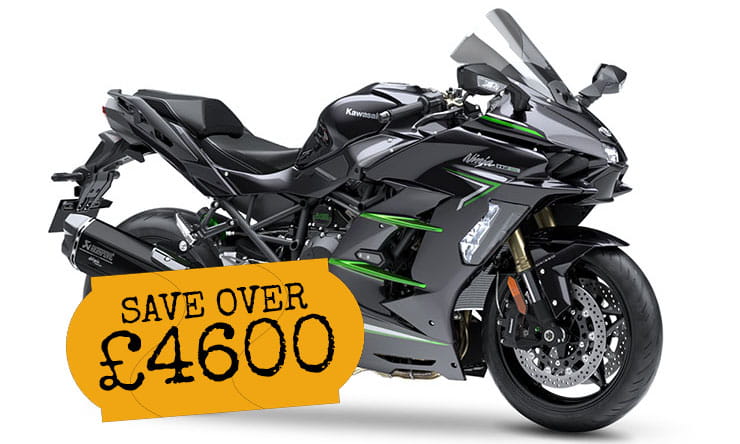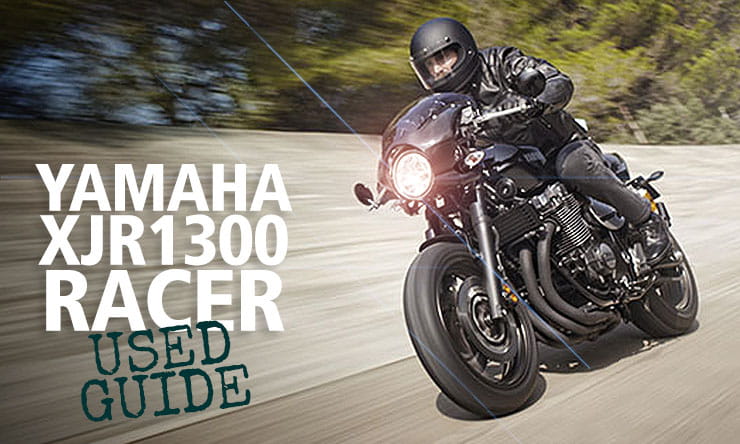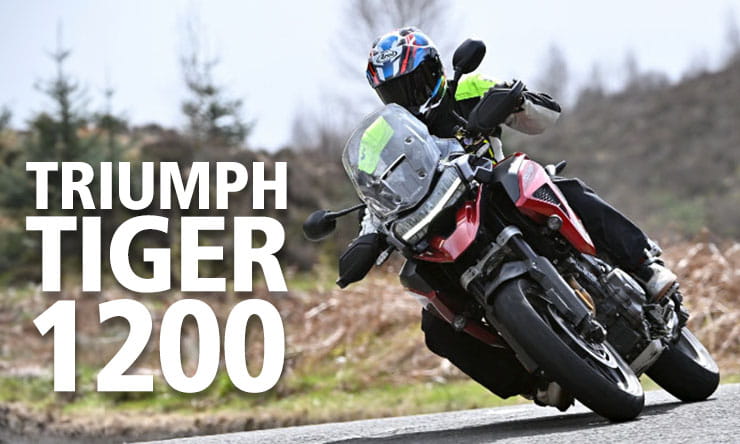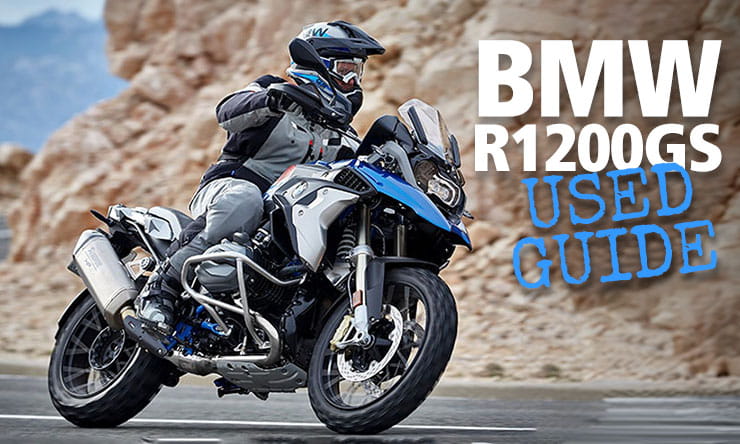Over the last few years, almost every major manufacturer has had a stab at converting their latest sports bike into a naked street bike with colossal power and a plethora of rider and aerodynamic aids enabling you to use it; AKA, the supernakeds. Honda, however, chose a slightly different route.
Honda set out to be different and didn’t want to produce an aggressive streetfighter or detuned race bike. Instead, the factory went back in time and took inspiration from their café racer history, specifically the CBs that challenged the British brands in the 1960s and ’70s – and added their own modern twist to create the CB1000R.
The Neo Sport Café range from Honda was the result of the CB4 concept bike which was unveiled at EICMA in 2015. Following the success of the concept, the Neo Sport Café range evolved into the CB1000R, CB650R, CB300R, and the CB125R.
The CB1000R was launched in 2018. In 2019 I spent the best part of six months riding one and was thoroughly impressed by its real-world performance (though it was far from being out its depth on track at Cadwell Park).
Now, for 2021, Honda has a new Euro-5 compliant CB1000R. We have the very stylish Black Edition on test, which comes with an additional up-and-down quick-shifter as standard, plus a stunning black finish. The new CB1000R has a more aggressive stance for 2021, a new subframe, a new exhaust, a new 5-inch TFT dash with Bluetooth connectivity, and new and very stylish wheels. Despite meeting Euro-5 regulations, the CB hasn’t lost any power or torque either.
For and against
- New TFT display
- Improved looks and finish
- Power and torque
- Hard to keep clean
- Rider aids not lean-sensitive
- Hazard lights flash during heavy braking
Honda CB1000R Black Edition (2021) Price - £12,999
Often, when I take delivery of a test bike, I look at the specs and then try to work out the price. I’m smugly/usually about right. But, with the new Black Edition Honda CB1000R, I was pleasantly surprised to discover I was wrong. I thought the price would be closer to £14,000 given the bike’s high standard of finish. The machined CB logo on the headstock is a nice touch, so too the new seven-spoke wheels that look like they have been stolen from an exotic race bike. The CB doesn’t have a plastic feel like some new bikes; instead, it feels sold and most definitely made from metal. The new headlight, new aluminium subframe, smaller number plate carrier, and machine finish on the engine deliver a ‘high-end’ sense of quality and style. If you removed the logo, you could be mistake for thinking it had come from an Italian factory, not Japan.
Honda hasn’t released prices for the standard model yet, but expect to pay around £1000 more for the Back Edition, which should make the standard bike £11,999-ish. In this segment, there is some strong and equally stylish competition, which is also less damaging on the wallet than the CB. Kawasaki’s very retro Z900 RS starts at between £10,649 and £10,949, and Yamaha’s throwback XSR900 starts at £9699. However, both are considerably down on power compared to the CB1000R. If you want a naked with the power to match the Honda, you’ll need a Z1000R or MT-10, with only the Yamaha having an on-par price.
Power and torque
Despite conforming to tight Euro-5 emissions regulations, Honda hasn’t lost any performance from their inline four-cylinder engine. In fact, the new power and torque curves are identical to the previous model launched in 2018, with a noticeable kick in torque at 6000rpm. The 2006 Honda Fireblade-derived motor produces 143bhp @ 10,500rpm and a healthy output of torque, 76.7lbft @ 8250rpm. Honda has conformed to Euro-5 with a new fuelling and a new exhaust with a voluminous end can whose looks, based on social media feedback, divide the nation. Four modes – Sport, Standard, Rain and User – are linked to the engine braking and traction control and offer different levels of performance and character.
Engine, gearbox and exhaust
As we’re testing the stunning Black Edition, the up-and-down quick-shifter comes as standard, which means the relatively light clutch is redundant once moving. The shift works perfectly, even at slow speeds, and is a joy to use. There is ample torque low down, so you don’t really need to dance around on the gear selector anyway, but I did just to hear the exhaust tone and play with the super-slick shifter.
Around town, the CB is quiet and unassuming but then, once away from the city, get the revs up and it sings. It’s not a screamer like Honda’s 2020 Fireblade, which sounds like a race bike, but the exhaust has a noticeable change in pitch at around 5000rpm, or just above, and it certainly has some character to it. Again, Honda have managed to make a standard Euro-5 exhaust sound exciting. Some may not like the CB’s looks, but I’m sure most will appreciate the noise it makes.
There is plenty of usable torque low down. Considering the CB runs a Fireblade-derived engine, the fuelling is relatively soft and friendly, especially in the Standard and Rain modes. Then, at 5-6000rpm, the engine picks up and whooshes towards its 11,000rpm redline. At first, the power step took me by surprise. It’s so friendly and forgiving lower down, but when you open the gas it drives hard towards the horizon – this is one quick bike. Nice docile Labrador one minute, greyhound the next.
In Sport mode, the TC works overtime in the first few gears to limit wheelies. The gearing is considerably shorter than the Blade’s gearing, and from the lights, the CB launches rapidly. Keep it pinned – you’ll need strong arms – and the top speed is impressive, too.
Honda CB1000R Black Edition (2021) Comfort and economy
Obviously, being a naked with the smallest of flyscreens, there is virtually no wind protection. But, as you’re sat in the bike with nice wide bars and a relatively large fuel tank, it’s not as painful as some naked bikes as the speed increases. 80mph cruising is relatively relaxed, though that does depend to some extent on the wind strength and its direction. If you find yourself on a German autobahn and riding above 110mph, it’s possible to tuck in behind the small screen, but you will require arms like Popeye.
The new aluminium sub-frame hasn’t increased the seat height, which remains at a reasonable 830mm. The seat is more comfortable than it appears while the ergonomics are roomy, the engine is smooth and the Showa suspension’s ride quality is typically plush. Sure, the CB’s no touring model but I’d happily take on some serious miles on this capable Honda.
Honda quote just below 50mpg, and on a relatively steady run I got close to that claimed figure. But open up the throttle and it’s easy to drop into the mid-to-low 40s. The theoretical fuel range is around 200 miles from the 16.2-litre tank (and the fuel gauge is now digital, displayed above the large gear indicator). Speaking of which, the all-new 5-inch TFT dash is a significant upgrade over the old model. Clear and easy to read, with four different layouts, fuel range, trip, consumption… everything you’d want for touring in fact! Some may suggest the display a little dull, not a futuristic iPad-style screen like on some models, but I like its ease of use and simplicity.
Handling, suspension and weight
We have gone up a few more kg this year, from 212kg to 214kg, and the new seven-spoke wheels are a fraction heavier, but only a fraction. Two kilos on this type of bike isn’t much – the same as four-litres of fuel – and you’d only really notice that slight increase in back-to-back testing with the old bike and running the same fuel loads.
Certainly, the CB1000R is no lightweight and carries itself almost as a muscle bike. But at 214kg it is lighter than Kawasaki’s Z1000R, and only a few more than Yamaha’s R1-derived MT-10. This Black Edition carries its weight remarkably well, and this is down to the excellent Showa suspension, which remains unchanged for 2021. The Big Piston Forks are fully adjustable, while the rear shock has both rebound damping and spring preload though no compression-damping adjustment. For 90% of riders for 90% of the time, there will be no complaints. It steers naturally, holds a line, and ground clearance is impressive for this type of bike. The set-up is on the soft side of sports, which gives you the confidence to push a little more, as you can feel the movement in the chassis, and the feel of the standard Michelin Power rubber.
As mentioned, in 2019 I took a CB1000R to Cadwell Park, reduced the sag a little (over 30mm from standard), and dialled in the forks a fraction to give more support under heavy breaking. The reduced sag meant I wasn’t dragging the pegs, and the bike performed way above my expectations in the fast group. For reference, the previous model came on Bridgestone BT-021 tyres as standard.
Honda CB1000R Black Edition (2021) Brakes
The brakes also remain unchanged for 2021, and even on track have been more than up for the job. You can feel the ABS working, more so on the rear, but only on track in extreme situations. The front is strong and progressive but not abrupt or too much around town while the back brake has a nice feel to it to help balance on slow-speed U-turns. Like most new Hondas, the indicators automatically flash when you brake hard, or when the ABS kicks in to warn other road users. There are three levels of the electronic engine braking, set simply as low, medium and high, which, with the standard slipper clutch, tries to prevent the rear wheel from skipping or locking during engine braking when down-shifting via the quick-shifter.
Rider aids, extra equipment and accessories
Rider aids remain unchanged for 2021, which means three main rider modes – Sport, Standard and Rain – with a separate User mode that allows you to personalise and set your own settings. The aids are simple: power, engine brake, and traction control (HSTC) are either low, medium or high, and the traction control can be de-activated. That’s it. Some models have over-complex rider aids, but the Honda is relatively simple and easy to understand.
The TC works on the side of caution, kicks in early and the reintervention is safe and relatively slow. In the low setting, the front wheel will rise slightly over crests, but isn’t too aggressive, depending on the front wheel speed and rpm. In the high setting, the TC kicks in early and the re-introduction of power takes a few seconds, again it’s set up on the side of caution rather than for fast lap times.
The only downside is the rider aids are not lean-sensitive, there is no IMU so therefore the bike has no way of knowing the lean angle. ABS and TC are both conventional, working from wheel and crank sensors. In the current market, on a £13,000 bike, should you expect lean-sensitive ABS? Especially from the safety-conscious Honda? Smaller, less expensive bikes come with an IMU. That said, the standard rider aids are good, but I’m sure you’ll see an IMU on the next generation of CB1000R.
Honda offers a variety or accessories packages for the CB1000R, from Sports to Journey, which includes a tail pack and tang bag. The indicators are self-cancelling, there is a handy USB socket under the seat, and the new clocks have Bluetooth connectivity.
|
Rivals
|
Power
|
Torque
|
Weight
|
Price
|
|
Kawasaki Z900RS
|
109.4bhp @ 8500rpm
|
72.6lbft @ 6500rpm
|
215kg
|
£10,649
|
|
Kawasaki Z1000
|
140.1bhp @ 10,000rpm
|
81.9lbft @ 7300rpm
|
221kg
|
£10,449
|
|
Yamaha XSR900
|
113.4bhp @ 10,000rpm
|
64.5lbft @ 8500rpm
|
195kg
|
£9699
|
|
Yamaha MT-10
|
158.2bhp @ 11,500rpm
|
81lbft @ 9000rpm
|
210kg
|
£12,499
|
|
Ducati Monster (2021)
|
110bhp @ 9250rpm
|
69lbft @ 6500rpm
|
188kg
|
£10,295
|
Honda CB1000R Black Edition (2021) Verdict
I was already a fan of the 2018 CB1000R, which is enjoyable in its naked simplicity. It has easy handling, great power and a fat dose of torque exactly where you need it. It is an accomplished road bike that can also handle a brisk track day, just. It also seems more mature and sophisticated than many of the aggressive streetfighter-style nakeds on the market.
For 2021 Honda has simply improved that level of sophistication and quality, and upped the style and style without messing with the engine and handing – if it ain’t broke don’t fix it, and all that. The inline-four is strong and the handing is more than a match for it.
The new TFT instruments are a big improvement over the dated clocks of old. I love the all-black styling and the new wheels, while the single sided swing-arm rear is stunning. The level of finish and quality is high, the CB looks stunning from every angle (Honda even reduced the size of the rear hugger, which some owners removed). As an everyday, usable bike that is also stylish and appealing, it scores highly. It may not have 200bhp but all the power it does have is usable, and the chassis, like the electronics, are forgiving and easy. The 2021 CB1000R doesn’t pretend to be something it’s not – simply put, it’s a bloody good road bike with genuine style.
Honda CB1000R Black Edition (2021) Spec
|
New price
|
£12,999
|
|
Capacity
|
998cc
|
|
Bore x Stroke
|
75 x 56.5mm
|
|
Engine layout
|
In-line four cylinder
|
|
Engine details
|
Water-cooled, 16v.
|
|
Power
|
107kw/143.5bhp @10500rpm
|
|
Torque
|
104Nm/76.7lbft 8250rpm
|
|
Top speed
|
150mph (EST)
|
|
Transmission
|
6 speed
|
|
Average fuel consumption
|
47mpg (Claimed: 48.5mpg)
|
|
Tank size
|
16.2 litres
|
|
Max range to empty
|
202miles (tested)
|
|
Rider aids
|
Riding Modes, Traction Control, ABS, engine brake – not lean sensitive.
|
|
Frame
|
Steel backbone
|
|
Front suspension
|
Showa SFF-BP USD forks
|
|
Front suspension
|
Fully-adjustable
|
|
Rear suspension
|
Showa single rear shock
|
|
Rear suspension
|
Pre-load and reboud
|
|
Front brake
|
2x 320mm disc, Nissin four piston caliper
|
|
Rear brake
|
256mm single disc, single-piston calliper
|
|
Front tyre
|
120/70 ZR17 on test Michelin Power
|
|
Rear tyre
|
190/55 ZR17 on test Michelin Power
|
|
Rake/Trail
|
25°/100mm
|
|
Wheelbase
|
1455mm
|
|
Seat height
|
830mm
|
|
Wet weight
|
212kg
|
|
MCIA Secured Rating
|
Not yet rated
|
|
Warranty
|
Unlimited miles / 2 years
|
|
Website
|
www.honda.co.uk
|
Photography by Tim Keeton, Impact Images
.ashx?h=493&la=en&w=740&hash=C73220E3B6E8F7180E29E8D4E4C055C1DDA43A77)
What is MCIA Secured?
MCIA Secured gives bike buyers the chance to see just how much work a manufacturer has put into making their new investment as resistant to theft as possible.
As we all know, the more security you use, the less chance there is of your bike being stolen. In fact, based on research by Bennetts, using a disc lock makes your machine three times less likely to be stolen, while heavy duty kit can make it less likely to be stolen than a car. For reviews of the best security products, click here.
MCIA Secured gives motorcycles a rating out of five stars, based on the following being fitted to a new bike as standard:
- A steering lock that meets the UNECE 62 standard
- An ignition immobiliser system
- A vehicle marking system
- An alarm system
- A vehicle tracking system with subscription
The higher the star rating, the better the security, so always ask your dealer what rating your bike has, and compare it to other machines on your shortlist.



.ashx?h=493&la=en&w=740&hash=C3D6B506F8201A471BE29AE2B47D2EE53025FA98)
.ashx?h=493&la=en&w=740&hash=B68D2C91BBABF67D9B636894CE09211B3598394B)
.ashx?h=493&la=en&w=740&hash=08300A878299EF4ED7F96AB0B252778E048E3F59)
.ashx?h=493&la=en&w=740&hash=2AB94A01EB15DEDA59B83C1A1244B702F99AF219)
.ashx?h=493&la=en&w=740&hash=8225FCA959A24D75767000462C6BB523C12CFF18)
.ashx?h=493&la=en&w=740&hash=48DB10E6D0E305B46BB8D101AFC9ED171C8EB9BD)
.ashx?h=493&la=en&w=740&hash=9AB7DDABE645C3A7B52C8B9B31FB90259F2024BE)
.ashx?h=493&la=en&w=740&hash=97C7A4D2CADA2434830CF59A0BADDD7ED8DF911A)
.ashx?h=493&la=en&w=740&hash=04F95BDE6DE1AB45E082B1769A534980E70C7BDB)
.ashx?h=493&la=en&w=740&hash=1EC0425AFF273057BEBDAE9060C7DFD754291B49)
.ashx?h=493&la=en&w=740&hash=5056240328E9594120C0339C16815DDF54AD1160)
.ashx?h=493&la=en&w=740&hash=9F7F8ED42E2756A691B3F1D7AD0FAB4BE077AE87)
.ashx?h=493&la=en&w=740&hash=6C63F05F0EFFCAB2CBEA1011E45E273B57F3DF5C)
.ashx?h=493&la=en&w=740&hash=F18E346AA845AE7ADF6083A5477B4120591CFA0C)
.ashx?h=493&la=en&w=740&hash=121B9451AC049E35B25FD8C7C6CF607A46509992)
.ashx?h=493&la=en&w=740&hash=775F9525A46364A08050D4C1D10913E433B2991F)
.ashx?h=493&la=en&w=740&hash=49B52A9BBC0AF69752F2ACF66819B0D68B3E0155)
.ashx?h=493&la=en&w=740&hash=7FF55209BA807A22CDFC75113336879957F32D5F)
.ashx?h=740&la=en&w=740&hash=EDBA2E7127986BF64F1FC0BC57A96C9C5E205035)
.ashx?h=740&la=en&w=740&hash=89C3FE89D90AAB24DD8A034D5ECC740C957428D3)
.ashx?h=493&la=en&w=740&hash=C73220E3B6E8F7180E29E8D4E4C055C1DDA43A77)



